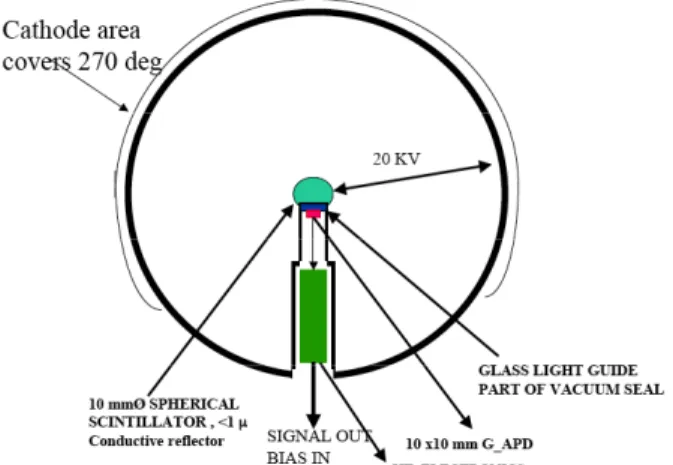A new Readout of large area Smart Photomultipliers by Geiger-mode APDs
E. Lorenz
a),b)1, D. Ferenc
b)a)
Max Planck Inst. for Physics, Foehringer Ring 6, D 80805 Munich, Germany
b)
Physics Dep. UC-DAVIS, One Shield Av, Davis, CA 95616-8677 USA
Abstract
Future Neutrino detectors require large, transparent detection volumes (water, ice, scintillator) and in turn a large number of large photomultipliers (PMT). We present a possible photon detector design based on the light amplification concept, e.g., a large, nearly spherical vacuum photon detector where the photoelectrons are accelerated onto a small scintillator. As secondary readout element Geiger- mode APDs are used. Advantages and drawbacks of this readout will be discussed. Some results from initial studies will be presented.
Keywords: Photon detectors, Neutrino experiments, Geigermode Avalanche photodiodes PACS: 95.55 Vj, 95.85 Ry
____________________________________________________________________________________________________
1
